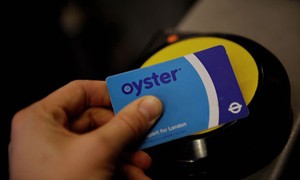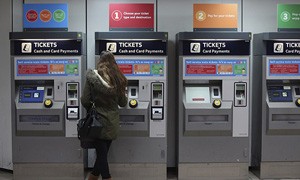The Famous Underground
The famous Underground has been an emblem of London for centuries now. Opened in the distant 1863 as the first rapid underground transit system in any town The London Underground, also called The Tube, is a network daily used by millions of travelers. A means of transport to Londoners, cheaper alternative for college students or just an attraction for anyone visiting the capital for the first time, the Underground is not something to miss, however, not an undertaking to be underestimated. Using one of its lines, paying the correct price, finding your way on the map are not easy tasks and any new user needs guidance.
The Tube servers an immense part of Greater London and even some parts of the home counties of Buckinghamshire, Hertfordshire and Essex. There are overall 11 lines – 270 stations – which constitute one of the busiest networks in the world. I needn’t mention that describing all 11 lines and the stations they serve would prove an endless waste of time and quite a confusing text so here is a map of The London Underground marking every line on the map in different color, under the map you can visit a website of Transport for London.
The Tube at night
Thanks to the recent demand for a reliable and fast public transport at night to connect distant parts of London, the newest improvement of the capital is the 24-hour Tube. Fares remain the same as using the tube during the day and any line serves passengers with trains every 10-20 minutes. You can see a map of the lines working round-the-clock here:
Now let’s get to the question how do we pay for the tube? Fares for transits using the underground are calculated using the zonal fare system – the overall are which the tube serves is divided into 6 zones, the first one being the central part of London and the sixth one – the last outer part and three additional zones out of Greater London. Keep in mind that for stations you find listed in two instead of one zone apply the cheaper fares.
About tickets: there are several ways to purchase a ticket for London’s tube. You can purchase a paper ticket for a single trip, a round trip or a paper card valid for a whole day but generally paper tickets are more expensive than using other options for payment so as to encourage users to turn to contactless methods of payment.
What you should know about paper tickets: they are called Travelcards and can be either for a day, a week or a period between a month and an year. Daily cards are those you purchase and get a paper ticket and card for a week or longer are issued on an Oyster Card. A Travelcard enables you to travel in Greater London on London Buses, Tramlink, London Underground, London Overground, Docklands Light Railway and National Rail services. They can be issued for travel within the six concentric zones in London, with Zone 1 (in the center) including areas of The City and West End up until Zone 6 (at the outer edge and including all previous zones) (which includes London Heathrow Airport and outlying suburbs like Uxbridge, Upminster and Orpington. A Travelcard can be used no only on the London Underground – you can travel with it on the London Overground, DLR and National Rail, where Travelcard is only valid within the zones indicated on the ticket so be careful which ones you choose when you buy a ticket; London Buses (any Travelcard can be used on any route) and on Tramlink where any Travelcard valid in zones 3, 4, 5, or 6 can be used on any tram route.
There are some complications about the Day Travelcards though – a one day Travelcard can be purchased in Anytime and Off-Peak variants. The Anytime Travelcard can be used at any time from 04:30 on the day it becomes valid; and the cheaper Off-Peak Travelcard cannot be used from 04.30 to 09.30 on weekdays. Off-Peak Travelcards are about 50% cheaper than Anytime Travelcards.
And the contactless payment is done by using an Oyster Card – where Travelcards for a week or more are stored – or a simple contactless Visa, Maestro, Mastercard or American Express.With these cards you don’t need to buy a paper ticket as you are paying directly with them.
What is an Oyster Card?

Oyster Card
Travelcards for seven days or more are also called season tickets and allow travel at any time of the day. Those tickets are electronically bound to a contactless credit-card-sized blue Oyster Card which you swipe in at the machines on each entrance and exit of a station (or bus/tram). If you buy your seasonal ticket for a month for example is will cost you 3.84 times the price of a 7-day card, while annual travelcards are sold for the price of 40 7-day tickets; prices of cards lasting between a month and an year are similarly calculated. You can purchase your Travelcard for many combinations of zones – the Oyster system checks that the Travelcard is valid in the zones it is being used in and will carge you no additional fare provided you use it in them. You should also know that an Oyster card can hold up to three season tickets at the same time.
If you don’t wish to purchase a specific Travelcard you can also use your Oyster Card for its Pay-A-You-Go function. In this case it is used as a stored-value card, holding electronic funds of money. Fares are charged to the card each time it is used, and the funds can be “recharged” when required. The maximum value that an Oyster card may hold is £90.
You can issue our own Oyster Card online Here and get it by post and you can also recharge your Oyster Card online or at any Oyster Ticket Stop – so far there are 3, 900 such in London: Here you can find the nearest to you.

London Underground Ticket Machines
And as for paper tickets, it’s a true work of art to operate a ticket machine machine; you can encounter any of the following so bear in mind their characteristics:
- Ticket Office Machines (TOM) – PC-based machines in ticket offices.
- Few Fare Machines (FFM/Tenfare) – self-service machines with the most common fare types from the particular station which do not accept credit or debit cards.
- Multi Fare Machines (MFM/Allfare) – other self-service machines with all touch screens for any destination on the underground offering Travelcards as well as tickets.
- Queue Buster Machnes (QBM/Quick Ticket Machines) – small machines on the walls which do not accept cash.
- Advance Fare Machines (AFM) – refurbished Fewfare machines which function like a Multifare machine.
Of all these, FFMs and MFMs give change, but only MFMs accept paper money.
And lastly, contactless Visa, Maestro, Mastercard and American Express debit and credit cards can be used to travel on London Underground (also on London Overground, Docklands Light Rail, most National Rail, London Tramlink and Bus services) exactly the same as the Oyster smartcard – all you have to do is touch your card on the validation devices at the beginning and again at the end of your journey (don’t forget about that when exiting – you don’t want any additional charges). The only downside is that these cards support only regular, non-discount.
Non-Oyster discounts
What I can say lastly about the tickets for London’s Undergound is that London Councils is kindly offering residents who are disabled or meet certain age a ”Freedom Pass” which allows them to travel free on TfL-operated routes at all times (even on some National Rail services within London at weekends and after 09:30 on a working day). Also there are specific Oyster photocards which offer a 30% discount on period tickets to full-time students over 18 at registered institutions within an area an area slightly larger than Greater London, at a cost of £20.
 I know it is complicated, you might need to read that twice but if you have ever encountered with public transport at any city, you cannot expect London’s Underground to be a piece of cake. Still, it is one of the most convenient, fast and economical way of transport and you must see it at least for the sake of such an experience!
I know it is complicated, you might need to read that twice but if you have ever encountered with public transport at any city, you cannot expect London’s Underground to be a piece of cake. Still, it is one of the most convenient, fast and economical way of transport and you must see it at least for the sake of such an experience!




